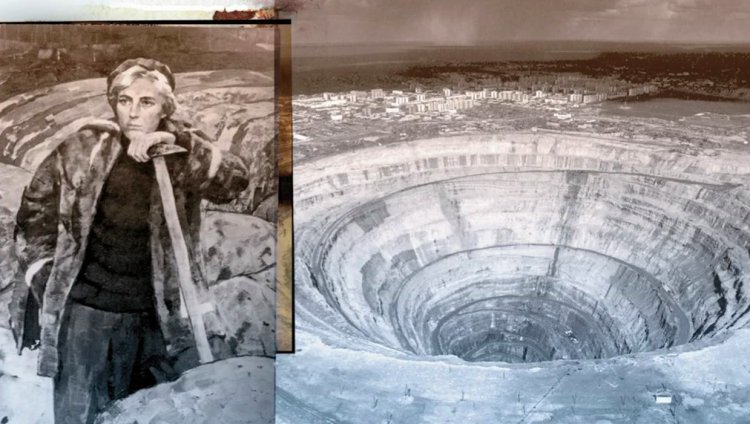On August 21, 1954, the first primary diamond deposit – a kimberlite pipe later named “Zarnitsa” (“Heat Lightning”) — was discovered in Yakutia.
The history of industrial diamond mining in Russia started in mid-20th century with the momentous discovery of most rich primary kimberlite deposits in Yakutia. The event that is now part of history is linked with the name of geologist Larisa Popugaeva who discovered the first kimberlite pipe in Russia, symbolically named “Zarnitsa” (“Heat Lightning”).
Larisa Anatolievna Popugaeva graduated from Leningrad State University in 1950 and then worked at the Central Expedition of USSR Geological Research Institute (VSEGEI) as a geologist. The country faced an important challenge at the time: it had to address the shortage of technical diamonds that were used in machine tools and at weapon manufacturing plants. No such deposits had been found in the USSR, so the diamonds had to be imported from abroad, which was costly. But the problem became even more acute after WWII; therefore, many specialists including geologists started looking for solutions.
In 1953, some sources of minerals were found in stream-sediment samples, and in 1954, a VSEGEI team was sent to track the sources. Larisa Popugaeva was on the team, along with laboratory assistant Fyodor Belikov.
Larisa Anatolievna Popugaeva (Grintsevich) – the geologist who discovered Zarnitsa, Russia’s first diamondiferous kimberlite pipe. Photo from the Mineralogy Museum of Mineralogy Department at Saint Petersburg State University. L. A. Popugaeva with lab assistant F. A. Belikov. Field Season 1954. Based on: (Erlikh, 2006)
They headed for Daldyn in early July. Stream-sediment (schlich) exploration started in the mouth of the Ken-Yuryakh. The geologists promptly found numerous large pyropes. That meant one thing – they were close to a deposit. Following the stream-sediment mapping, they came to the conclusion that the pyropes were brought by the right-hand tributary of the Ken-Yuryakh, i.e., the source was on the top. But nothing was found there and the researchers went back to Daldyn. Then Popugaeva thought that the team needed to focus on the area between the river and the brook. Lying on the ground with a magnifying glass in her hand, she was examining moss lest she missed even one piece of kimberlite. Journalist and writer Valery Osipov called this approach the animal method, while the geologist herself would joke “I started looking for kimberlites by using pyrope survey and ended with the animal method.”
Once, the team made a stop due to heavy rain. That was when the main event happened.
While Fyodor Belikov was making fire and putting the kettle on, Popugaeva was examining pieces of rock found nearby. Having lifted the topsoil, she noticed a bluish mass with a large number of pyropes, and cried: “Fyodor, look! It’s blue clay! And full of pyropes too!” The find was the key that opened the door to the subsequent discovery of a series of primary diamond deposits in Siberia: Mir, Aikhal, Udachnaya, Sytykanskaya, etc. Later, M. A. Gnevushev, Head of Diamond Laboratory, suggested that the pipe be called “Zarnitsa,” which means “a remote quick flash in the sky, reflecting a lightning of a distant thunderstorm.”
Two exploration projects, in 1955—1958 and in 1977—1982, made it clear that there were enough diamonds there for industrial-scale mining. Therefore, Zarnitsa formally became a deposit in 1983; the mining started in 2000.
Photo on the homepage: ochevidets.ru
Photo on the page: Yandex Zen























